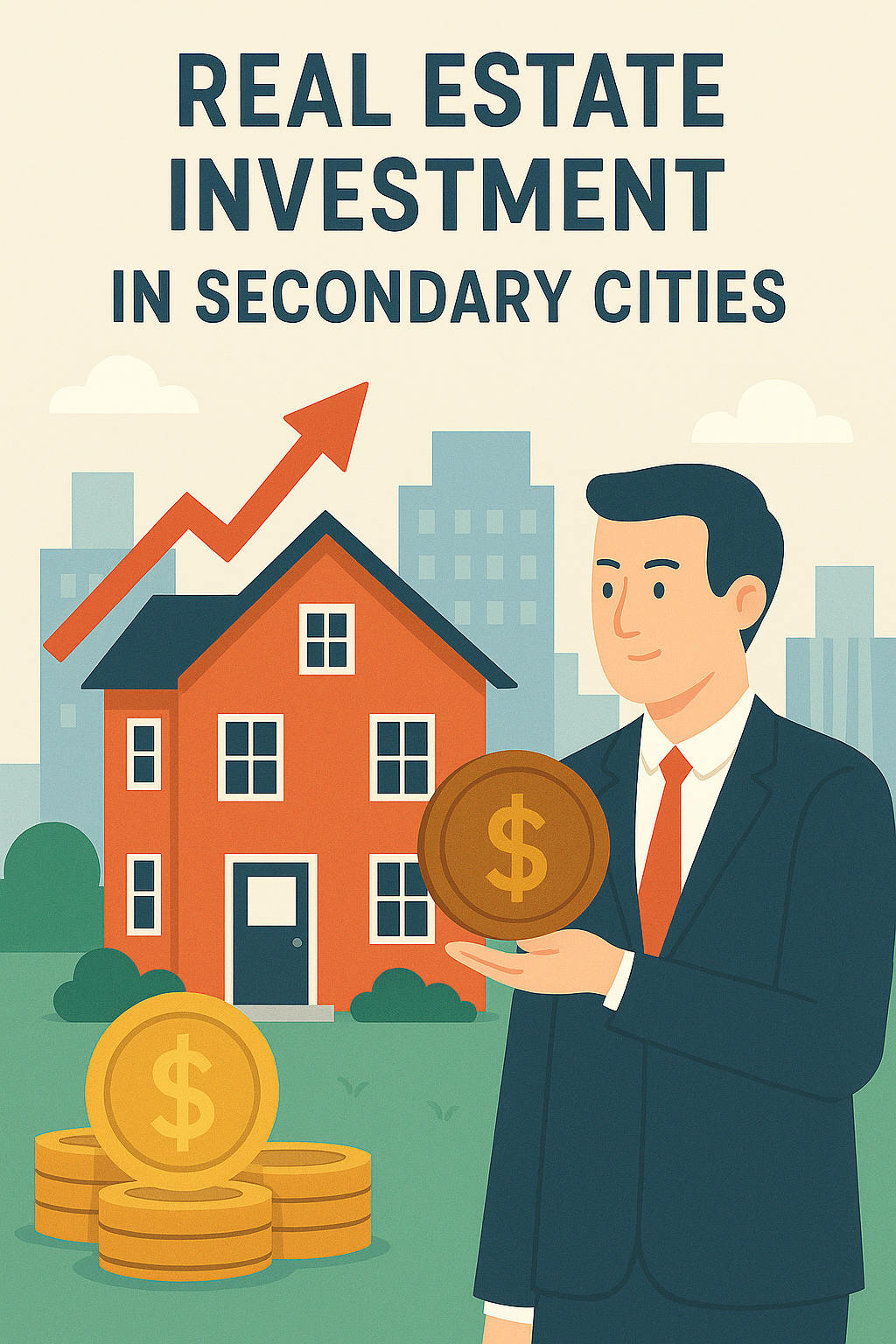Real Estate Investment in Secondary Cities: Why It’s Booming in 2025
In 2025, real estate investment is shifting from major metropolitan areas to secondary cities—and savvy investors are taking notice. These up-and-coming locations offer affordability, strong ROI potential, and long-term growth, making them hot spots in today’s property market.
What Are Secondary Cities in Real Estate?
Secondary cities are mid-sized urban centers that offer many of the amenities of larger cities but at a lower cost. They are not primary markets like New York City, Los Angeles, or Chicago—but cities such as:
These cities are experiencing rapid economic growth, job creation, and population expansion—making them ideal for real estate investment in 2025.
Why Investors Are Shifting Focus
1. Affordability and Lower Entry Costs
Buying a property in a secondary city typically requires far less capital than in a primary city. This allows first-time investors and small portfolio owners to enter the market without overextending.
2. Faster Growth Rates
According to recent Census Bureau data, secondary cities have seen double-digit population growth in the last decade. As demand for housing rises, so do rental rates and property values.
3. Remote Work Is Fueling Migration
Thanks to remote and hybrid work trends, more people are choosing lifestyle-friendly, affordable cities—boosting real estate demand in smaller markets.
4. Less Competition, More Opportunity
Fewer institutional investors and big developers in these markets means more opportunity for individual investors.
Investment Opportunities in Secondary Cities
🏘️ Residential Rentals
High demand for rental homes and apartments due to increased migration and limited housing supply.
🏢 Mixed-Use Developments
Secondary cities are developing walkable communities with residential, retail, and office space—perfect for mixed-use investment.
🏬 Short-Term Rentals
Tourism and business travel are also expanding in these areas, making Airbnb-style properties profitable when local laws allow.
🧠 Key Tips for Investing in Secondary Cities
Research Job Growth & Economic Development
Choose cities with expanding industries (tech, healthcare, education).
Check Infrastructure Projects.
Future roads, public transit, and schools can boost property values.
Understand Local Zoning Laws
Secondary cities often have flexible regulations, but due diligence is key.
Use Local Real Estate Agents
They know the neighborhoods, pricing trends, and buyer behavior.
Real Estate Investment in 2025: Why Timing Matters
With high mortgage rates still affecting primary markets, secondary cities provide a more stable environment for long-term gains. In fact, a recent report by Realtor.com shows that secondary markets are outperforming top-tier cities in both appreciation and rental yields.
FAQ: Real Estate Investment in Secondary Cities
Q: Is it risky to invest in smaller cities?
A: Like any investment, there’s risk. But with thorough research and long-term planning, secondary cities offer lower volatility and higher growth potential.
Q: What are the best property types to invest in?
A: Single-family rentals, duplexes, and small multifamily properties are top choices due to high demand and cash flow potential.
Q: Are secondary cities good for beginners?
A: Yes. Lower costs and growing demand make them ideal for first-time investors.
Q: How do I find a good secondary city?
A: Look for cities with population growth, job opportunities, strong rental demand, and local infrastructure improvements.
Useful Links
🚀 Final Thoughts + Call to Action
As the housing market evolves, secondary cities are emerging as the smart investor’s choice. With affordability, growth potential, and lifestyle appeal, they offer the ideal blend of risk and reward.
👉 Start building your real estate portfolio today—explore secondary markets and work with a trusted local agent for personalized guidance.
